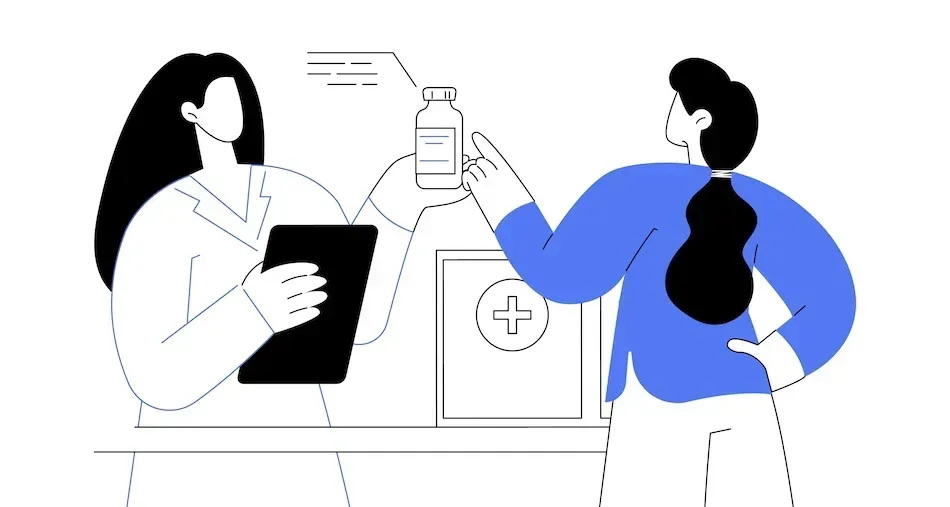Negotiated Medicare Imbruvica Price Change Announced for 2026

In August 2022, the Biden Administration signed the Inflation Reduction Act, which provided patients with many benefits, such as a reduction in the price of insulin, changes in the donut hole, and a maximum out-of-pocket for Prescription drugs for Medicare enrollees.
It also put together a plan that will allow Medicare to directly negotiate the prices of certain high-expenditure, single-source drugs that do not have generics or biosimilar competition.
The Centers for Medicare & Medicaid Services (CMS) selected 10 drugs covered under Medicare Part D for the first cycle of negotiations. The first price applicability year will be 2026.
One of those chosen drugs is Imbruvica (ibrutinib, Pharmacyclics LLC), a blood cancer drug used in cancer treatments, including chronic lymphocytic leukemia (CLL)/small lymphocytic lymphoma (SLL) and Waldenström's Macroglobulinemia (WM). Many patients taking this therapy can significantly reduce their out-of-pocket costs.
Starting in 2026, the negotiated 30-day supply price for this drug will be $9,319. This is a 38% reduction from the calendar year 2023, when the list price for a 30-day supply of Imbruvica was $14,934.00.
According to CMS, for those with Medicare Part D coverage, these savings would be an addition to savings from other cost savings provisions in the Inflation Reduction Act, such as the cap on out-of-pocket drug costs for people with Medicare.
As mentioned, these negotiated prices will become effective on January 1, 2026. The participating drug company with the selected discounted drug will be required to ensure the negotiated price is available to eligible medicare enrollees, standalone pharmacies, in-store pharmacies, and mail-order services. All other entities that dispense these drugs are also included in this program.
Medicare prescription plans, including standalone Part D plans and Medicare Advantage-prescription drug plans, are required by law to include in their formularies the selected drugs participating in the CMS and participating drug company negotiated price program. To ensure compliance, CMS will perform its comprehensive formulary review process for Medicare Prescription plans to assess practices that may undermine access to negotiated prices for selected drugs for people with Medicare.
A public explanation of CMS’s agreed-upon negotiated prices will be available in March 2025.
How Long Do These Negotiated Prices Apply? Are They Adjusted Over Time?
The Inflation Reduction Act of 2022 requires that the negotiated price apply to selected drugs so long as the selected drug remains in the Medicare Drug Price Negotiation Program. For each year after the first initial price applicability year, for example, Imburvica (2026), the CMS will publish an updated negotiated price for this and every other selected drug.
According to CMS, the drug's price will equal the negotiated price for the previous year, increased by the annual percentage increase in the consumer Index for all urban consumers (United States city average) (CPI-U). Should CMS and the primary manufacturer renegotiate the negotiated price of the selected drug, the newly updated drug price would also be updated.
What Happens with These Negotiated Prices in the Second or Subsequent Cycles of Negotiations?
On May 3, 2024, the CMS published draft guidance for the initial price applicability year 2027. This would be the second year that the negotiated prices for selected drugs would go into effect.
This means that the drugs for the first year of applicability, 2026, were selected in 2024, and the prices were negotiated in 2025.
The second round of negotiations will occur in 2025 which may result in negotiated prices that will be effective beginning in 2027.
If a drug selected in the first cycle of negotiations has a negotiated price and is subsequently identified as a therapeutic alternative to a drug selected for a second cycle of negotiations, the agreed-upon negotiated price for the first round of negotiations could serve as an input into the initial offer development process for the drug selected for the second cycle of negotiations.
For additional information about how the selections were made, how the prices were negotiated, and with whom, view the following PDF provided by CMS: Medicare Drug Price Negotiation Program: Negotiated Prices for Initial Price Applicability Year 2026
Sources:
In August 2022, the Biden Administration signed the Inflation Reduction Act, which provided patients with many benefits, such as a reduction in the price of insulin, changes in the donut hole, and a maximum out-of-pocket for Prescription drugs for Medicare enrollees.
It also put together a plan that will allow Medicare to directly negotiate the prices of certain high-expenditure, single-source drugs that do not have generics or biosimilar competition.
The Centers for Medicare & Medicaid Services (CMS) selected 10 drugs covered under Medicare Part D for the first cycle of negotiations. The first price applicability year will be 2026.
One of those chosen drugs is Imbruvica (ibrutinib, Pharmacyclics LLC), a blood cancer drug used in cancer treatments, including chronic lymphocytic leukemia (CLL)/small lymphocytic lymphoma (SLL) and Waldenström's Macroglobulinemia (WM). Many patients taking this therapy can significantly reduce their out-of-pocket costs.
Starting in 2026, the negotiated 30-day supply price for this drug will be $9,319. This is a 38% reduction from the calendar year 2023, when the list price for a 30-day supply of Imbruvica was $14,934.00.
According to CMS, for those with Medicare Part D coverage, these savings would be an addition to savings from other cost savings provisions in the Inflation Reduction Act, such as the cap on out-of-pocket drug costs for people with Medicare.
As mentioned, these negotiated prices will become effective on January 1, 2026. The participating drug company with the selected discounted drug will be required to ensure the negotiated price is available to eligible medicare enrollees, standalone pharmacies, in-store pharmacies, and mail-order services. All other entities that dispense these drugs are also included in this program.
Medicare prescription plans, including standalone Part D plans and Medicare Advantage-prescription drug plans, are required by law to include in their formularies the selected drugs participating in the CMS and participating drug company negotiated price program. To ensure compliance, CMS will perform its comprehensive formulary review process for Medicare Prescription plans to assess practices that may undermine access to negotiated prices for selected drugs for people with Medicare.
A public explanation of CMS’s agreed-upon negotiated prices will be available in March 2025.
How Long Do These Negotiated Prices Apply? Are They Adjusted Over Time?
The Inflation Reduction Act of 2022 requires that the negotiated price apply to selected drugs so long as the selected drug remains in the Medicare Drug Price Negotiation Program. For each year after the first initial price applicability year, for example, Imburvica (2026), the CMS will publish an updated negotiated price for this and every other selected drug.
According to CMS, the drug's price will equal the negotiated price for the previous year, increased by the annual percentage increase in the consumer Index for all urban consumers (United States city average) (CPI-U). Should CMS and the primary manufacturer renegotiate the negotiated price of the selected drug, the newly updated drug price would also be updated.
What Happens with These Negotiated Prices in the Second or Subsequent Cycles of Negotiations?
On May 3, 2024, the CMS published draft guidance for the initial price applicability year 2027. This would be the second year that the negotiated prices for selected drugs would go into effect.
This means that the drugs for the first year of applicability, 2026, were selected in 2024, and the prices were negotiated in 2025.
The second round of negotiations will occur in 2025 which may result in negotiated prices that will be effective beginning in 2027.
If a drug selected in the first cycle of negotiations has a negotiated price and is subsequently identified as a therapeutic alternative to a drug selected for a second cycle of negotiations, the agreed-upon negotiated price for the first round of negotiations could serve as an input into the initial offer development process for the drug selected for the second cycle of negotiations.
For additional information about how the selections were made, how the prices were negotiated, and with whom, view the following PDF provided by CMS: Medicare Drug Price Negotiation Program: Negotiated Prices for Initial Price Applicability Year 2026
Sources:

about the author
Diahanna Vallentine
Diahanna is the Financial Program Manager for the HealthTree Foundation, specializing in financial help for multiple myeloma and AML patients. As a professional financial consultant and former caregiver of her husband who was diagnosed with multiple myeloma, Diahanna perfectly understands the financial issues facing myeloma patients.
More on Navigating Your Health
Trending Articles

Get the Latest Chronic Lymphocytic Leukemia Updates, Delivered to You.
By subscribing to the HealthTree newsletter, you'll receive the latest research, treatment updates, and expert insights to help you navigate your health.
Together we care.
Together we cure.
3x Faster.








